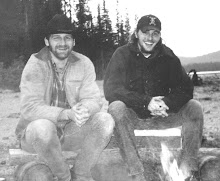
Just as a prize-fighter's key to success in the ring relies on his ability to 'locate' punches on an opponent, the key to the coon trapper's success with boxes (actually any trapper regardless of target species) relies on location. Littering coon boxes haphazardly and randomly will be just as ineffective as a fighter flailing wildly at Jack Dempsey. Finding available food sources will help develop a system for setting boxes on well-traveled trails. As mentioned in the first article in this series, I prefer to start getting boxes out preseason (about a week in advance where legal) to make setting opening day much more efficient, as it's a matter of impaling a fresh carp head, a smear of bait, or a shot of trailing scent, setting the trap and moving to the next box. Also, when setting boxes preseason (say 3-4 days before setting traps) I also like to pre-bait with a chunk of fish and/or a couple of jumbo marshmallows. I figure since I'm already getting boxes out, might as well get the coon a free meal, and let him investigate the box and lose some of his caution when approaching the next time with a 220 guarding the entrance. Prebaiting boxes will definitely improve your catch per set ratio, especially over the first 3-5 check days. I also cannot over-emphasize the value of gangsetting with coon boxes. If the location is worthy of one, it's worthy of two, especially considering the frequency of possum catches in some areas of the country. You cannot catch doubles, triples, quadruples, etc of any animal without having multiple sets in the first place.
I want to use this opportunity to encourage you to use the utmost discretion when using 220s with coon boxes (or any trap or snare) in areas where there's a chance of catching a bird dog, a hound, or the farmer's dog. It's definitely an easy way to get into an avoidable situation.
Thanks for reading the second blog in the Coon Boxing series. I really appreciate all of the positive feedback I've received after the first blog, it seemed like many of you were able to get some real value from the content.

